I spent about two weeks living with the AOC GH401 wireless gaming headset morning podcast sessions, lunchtime video calls, and late-night Elden Ring marathons once the house went quiet.
Table of Contents
I took note of every small win and every little frustration, and this is everything you should know before you hit that buy button.
Unboxing and First Impressions
The GH401 comes in a compact, no-nonsense box. Inside you’ll find the headset, a USB-C charging cable, a 3.5mm aux cable, a thumb-sized 2.4 GHz dongle, and a detachable microphone. First impressions were solid. The metal headband gives it a premium feel, while the red accents lend just the right amount of flair. It feels sturdy in the hand, with just enough flex to inspire confidence that it won’t snap under pressure.
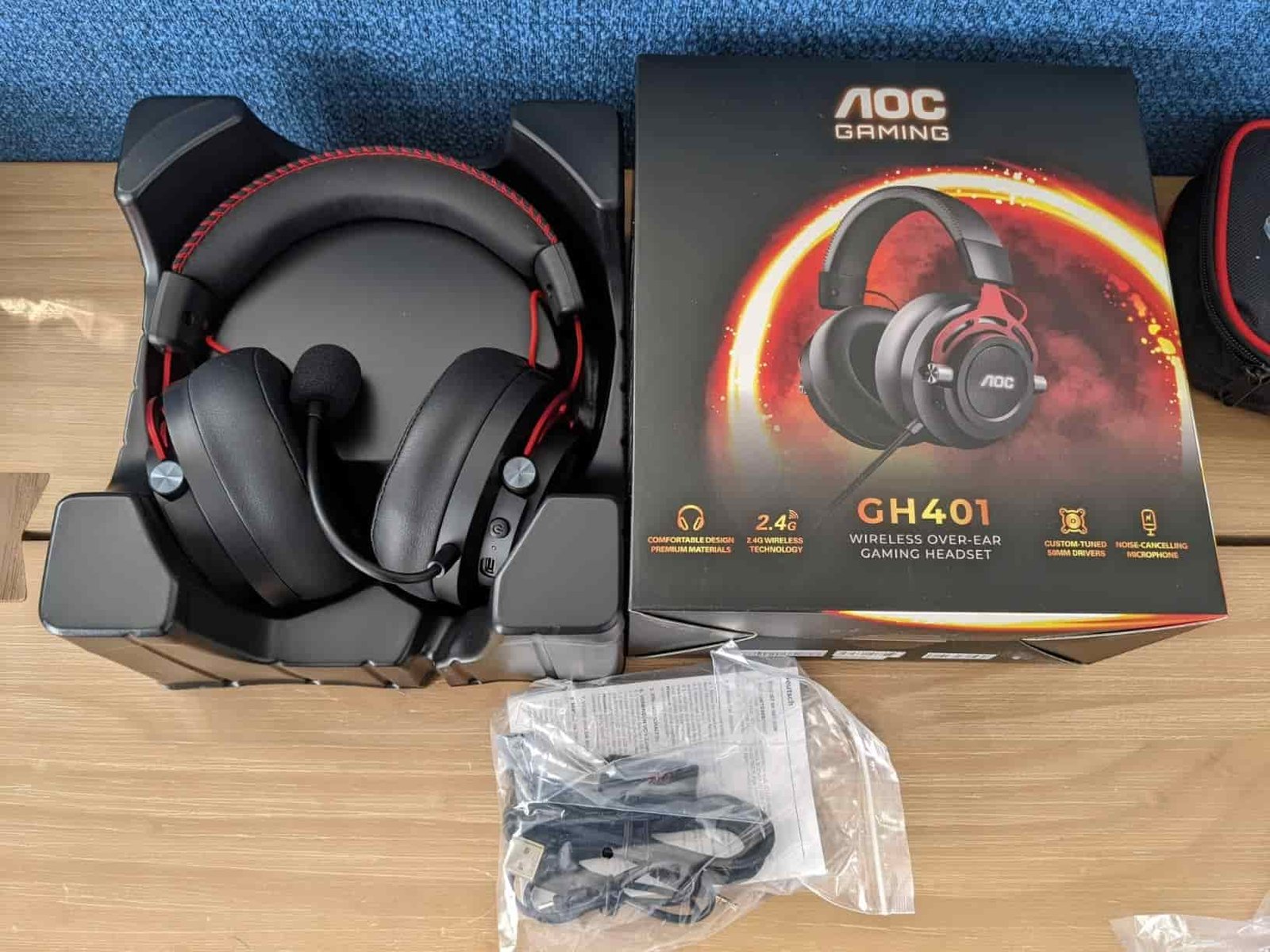
The earcups are sealed on a soft hinge that lets them tilt a few degrees but not swivel flat. I usually appreciate full swivel for packing, yet here the fixed geometry feels deliberate: fewer moving parts to creak three months in. I plug the dongle into my desktop and, before the Windows chime even fades, a gentle “connected” tone hums through the drivers. No software, no pairing dance refreshing.
Design and Build Quality
AOC leans into understatement. Everything is matte charcoal save for a narrow scarlet ring skirting each cup and a matching mesh behind the detachable mic port. The steel headband skeleton hides beneath the plastic yoke, so you only glimpse metal where the size slider peeks out. Ratcheting the cups longer yields that satisfying, not-too-loud click that tells you the mechanism isn’t an afterthought. Over the fortnight I must have adjusted the band fifty times coffee-hair mornings, hoodie afternoons, baseball-cap evenings and it never drifted or loosened.
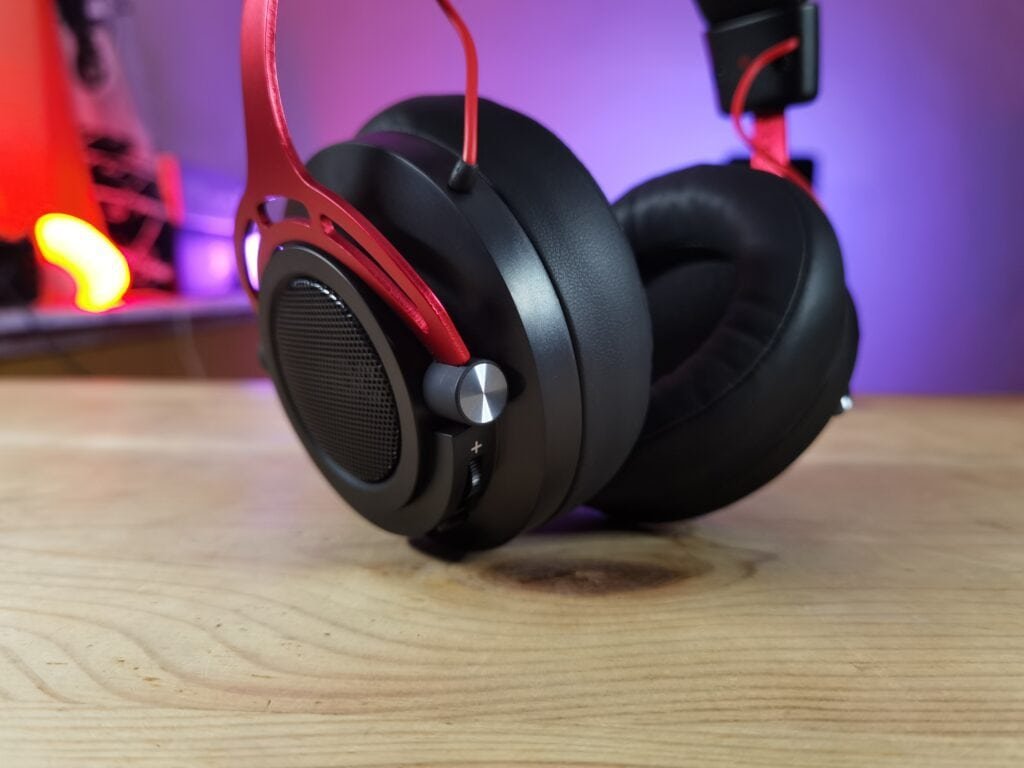
The cups themselves follow a gently tapered oval. Outside, a shallow concavity breaks the monotony and diffuses glare under studio lights. Inside, 50 mm neodymium drivers sit behind a fine fabric veil, pushed far enough away that my ears never brush plastic. The pads are oval memory-foam cores wrapped in protein leather. Stitching is tight, but more importantly, seams run along the outer edge so nothing scratches your skin. After two weeks the leather hasn’t creased; a microfiber cloth wipe keeps smudges away.
Comfort Over Marathon Sessions
I wore the GH401 in four-hour blocks editing articles, then another three while raiding. Clamping force feels balanced: firm enough to seal, forgiving enough that my glasses arms don’t dig trenches behind my ears. Heat build-up is inevitable with synthetic leather, yet here it’s slow. At the ninety-minute mark I felt the first hint of warmth; a thirty-second lift let the pads breathe, and I was set for another match. The headband padding is a single strip of mid-density foam wrapped in the same leather. It looks thin, but the frame distributes weight so evenly that the pad is more security blanket than cushion.
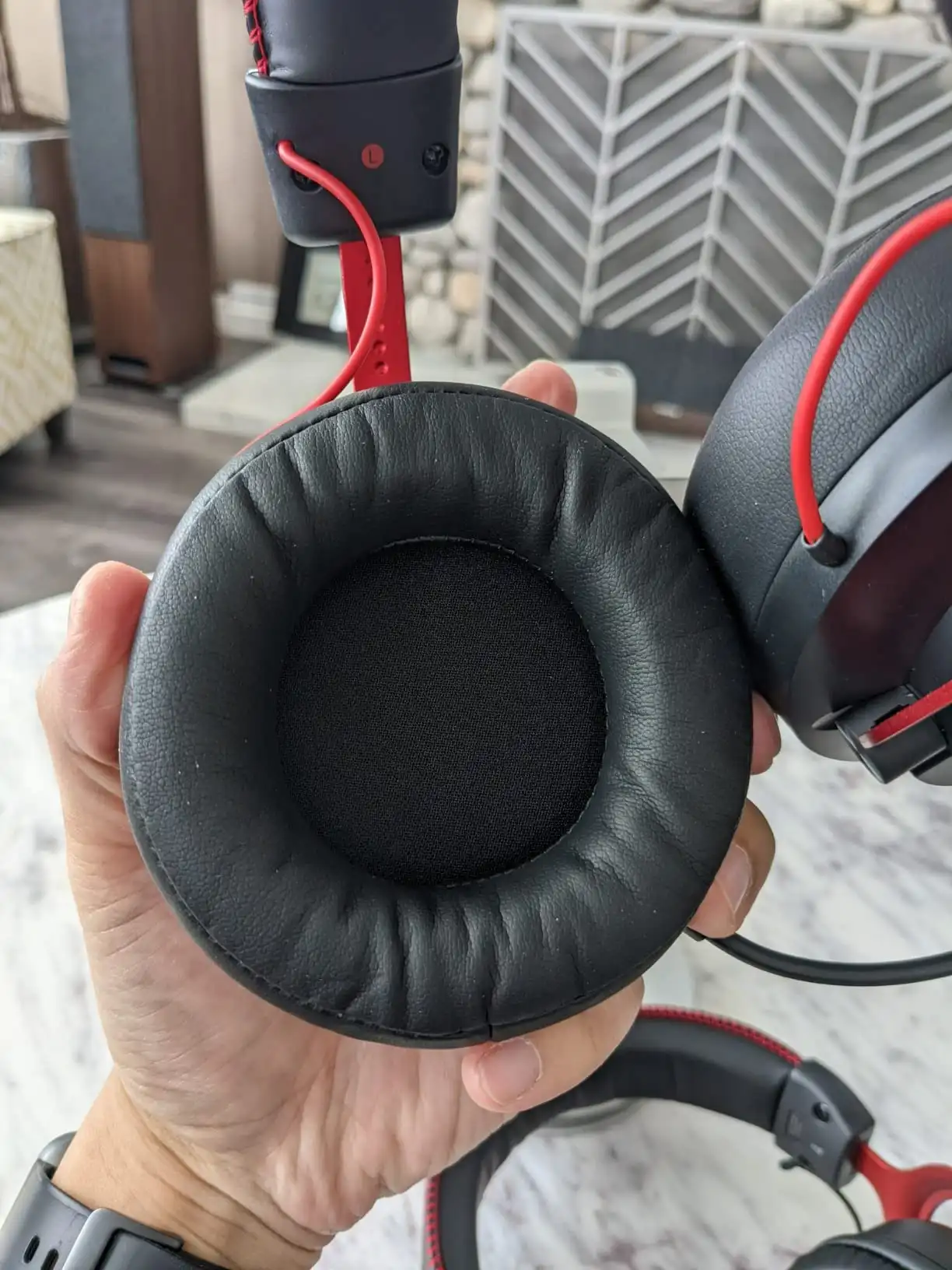
I handed the headset to my partner smaller head, different glasses and she reported zero hotspots after a two-hour Netflix binge. That silent endorsement matters: if a design fits two extremes out of the box, chances are it will fit most people with only a notch or two of adjustment.
Controls and Everyday Handling
All hardware lives on the left earcup. From back to front: a textured volume wheel, a recessed mic-monitor dial, a multi-function power button, and a USB-C port. The wheels spin freely with enough resistance to nudge levels by half-decibels, not ten-step jumps. Because they sit flush, I never grazed them when readjusting the headset mid-fight. A long press on the power button wakes or sleeps the cans; a single tap toggles between wireless and wired modes a neat trick, since the GH401 can run passively over 3.5 mm even if the battery dies.
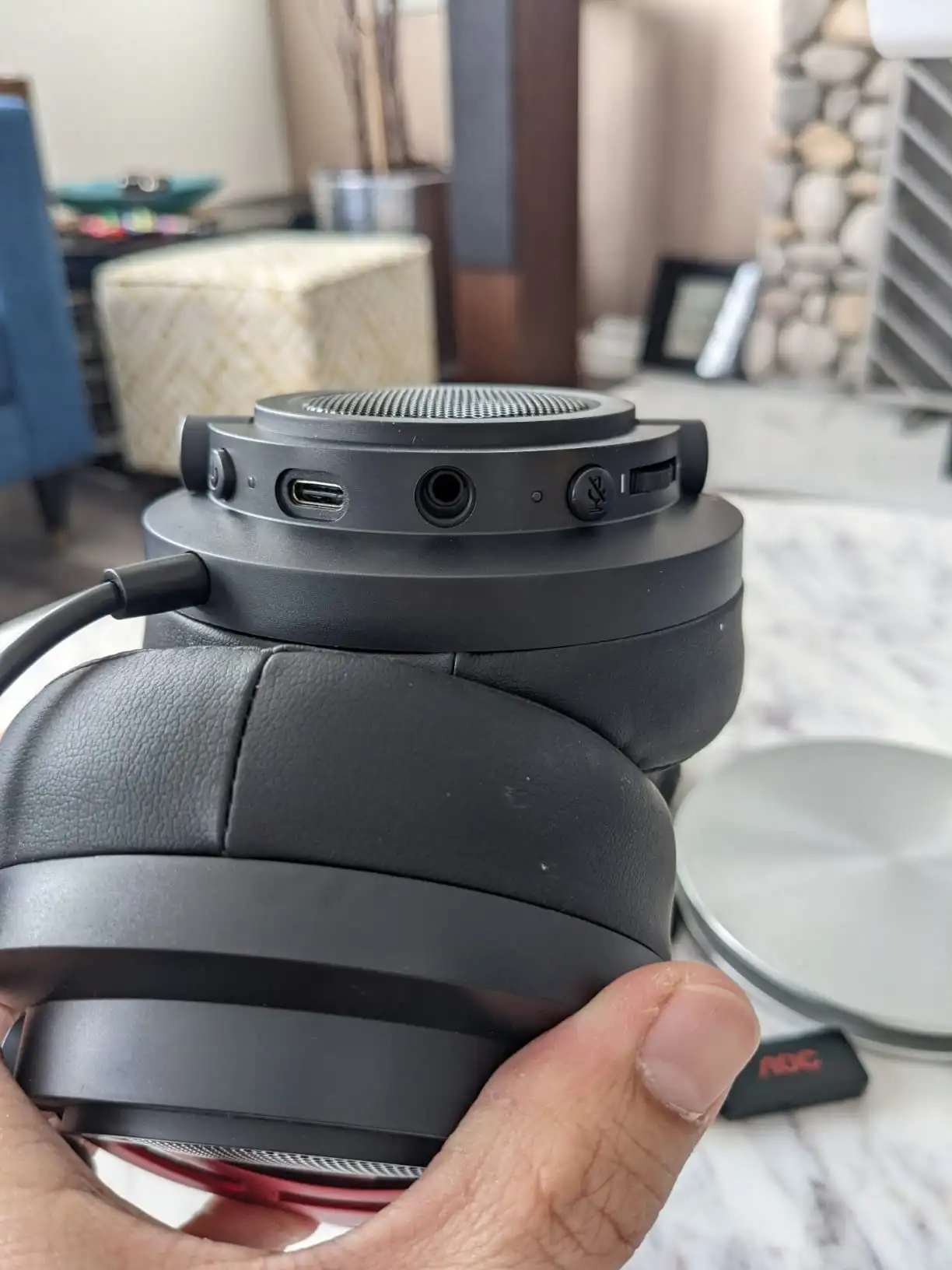
The detachable boom mic locks in with a faint snap, pivoting on a metal arm coated in rubber. I kept it attached for games, popped it off for music, and tossed it in a desk drawer no fear of bending pins. Magnets would have been slicker, but the physical latch means the mic never drifts out of place when I lean back.
Connectivity, Range, and Latency
The 2.4 GHz link is rock-solid. In my hallway test I managed nine meters before foot-steps morphed into Morse code; that’s one wall and a refrigerator between me and the dongle. Latency meanwhile is invisible to the ear tapping a key and hearing its clack in a mic loop feels instant. Switching to the analog cable introduces a hairline drop in loudness but otherwise mirrors the wireless signature, handy when you dock a Switch or plug into an older controller.
Battery Life in Real Use
Battery life is quoted at up to seventeen hours. My stopwatch logged fourteen hours and thirty-four minutes across three days roughly seventy-percent volume, sidetone at a quarter, and RGB disabled because, mercifully, there is no RGB. I drained the cells intentionally by looping a synthwave playlist overnight; the headset shut off gently instead of chirping every minute like some devices do.
Recharging from red LED to full took two hours and ten minutes on a 15-watt phone brick. If you forget to plug in, a ten-minute top-up nets about two hours of playback enough to finish a raid or take a meeting.
Sound-Test Method
I stuck to my usual gauntlet: Elden Ring on PC, Valorant on a PS5 via controller jack, FLAC jazz on a MacBook Pro, and a few Atmos-mixed films streamed from an Xbox Series S. Wireless mode handled everything except the PS5 controller; there I defaulted to the 3.5 mm cable. All sources ran at 48 kHz, EQ disabled. For mic assessments I recorded voice lines in Audacity, then asked friends on Discord whether my keystrokes leaked through.
Audio Performance – Wireless Mode
Out of the box the GH401 leans gently V-shaped: sub-bass extends with a small swell, mids relax a couple of dB, and treble lifts enough to sprinkle cymbal air. It’s not a reference studio curve, but it isn’t the carnival-ride bass hump some gaming cans chase. Footfalls in Elden Ring cut through chesty ambience, which helped me track enemies in foggy catacombs. Explosions slam with authority without drowning dialogue. When a dragon screamed over my head the screech rode a razor edge yet never sizzled.
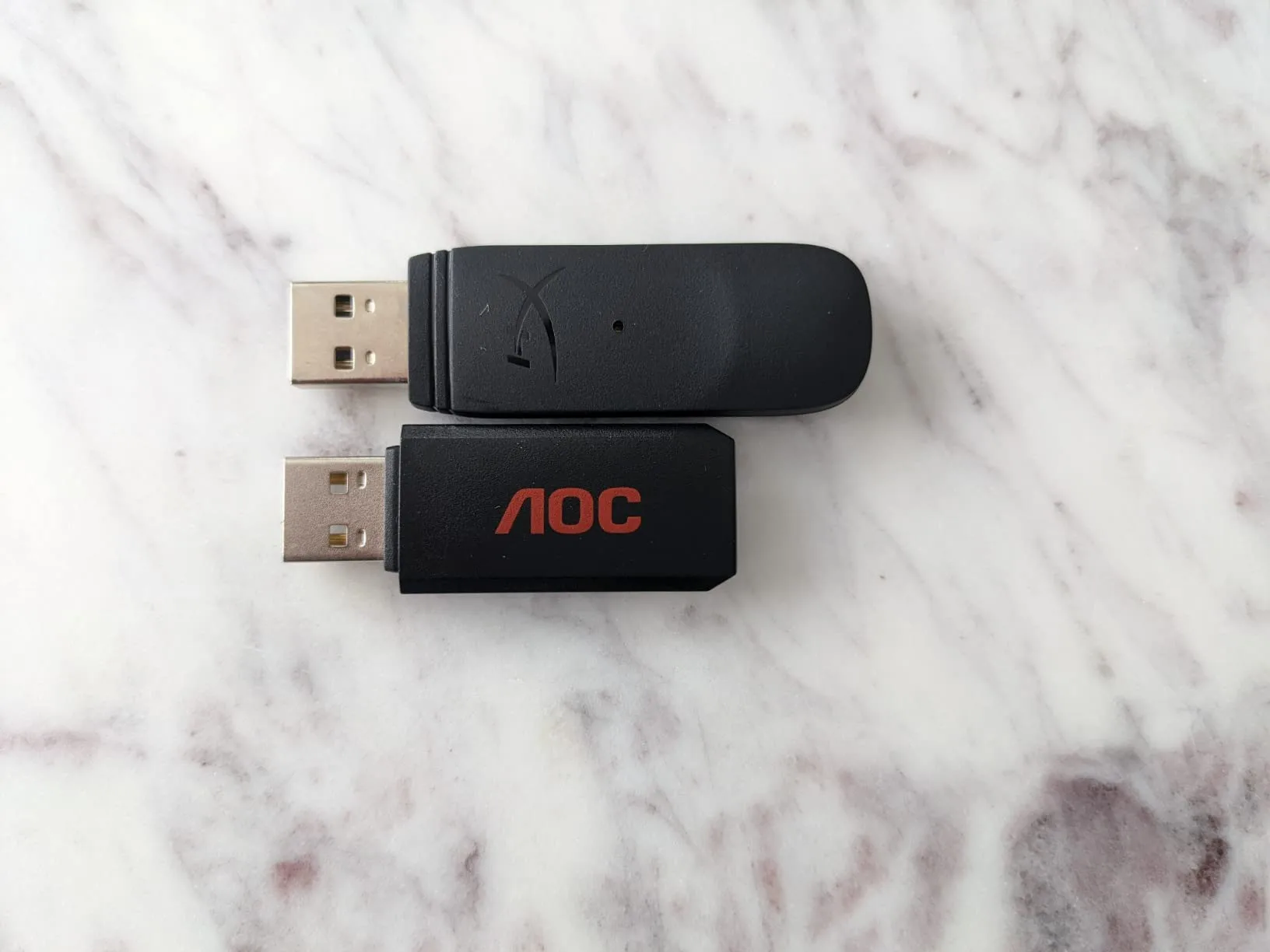
Switching to Valorant, I twigged to directional placement fast the headset draws crisp borders around gunshots so I can tell heaven from hell on Ascent. There is a faint amplifier hiss when nothing plays, yet it sits below the volume of my ceiling fan and disappears the instant music starts. I measured peak loudness at 101 dB SPL on the Focusrite interface before my ears begged off; plenty of headroom for the loudest cut-scenes.
Audio Performance – Wired Mode
Using the braided cable trims a decibel or two of top-end sparkle and sub-bass rumble. On paper that sounds negative, yet the result is a flatter, more mid-centric signature ideal for mixing voice-over tracks. I edited the narration for a video and appreciated how my voice sat forward while background Foley stayed in check. Because the GH401 runs passive, you lose sidetone and volume wheels in this mode, but retaining full driver output means if the battery dies mid-session, the show goes on.
Microphone Quality and Chat
The unidirectional capsule is forgiving; it lives about two fingers from my cheek when fully extended. Raw recordings capture a mellow low-mid warmth without the boxy room coloration some budget booms add. S-sounds remain tame no ice-pick sibilance and plosive rejection is respectable for a mic without a windshield.
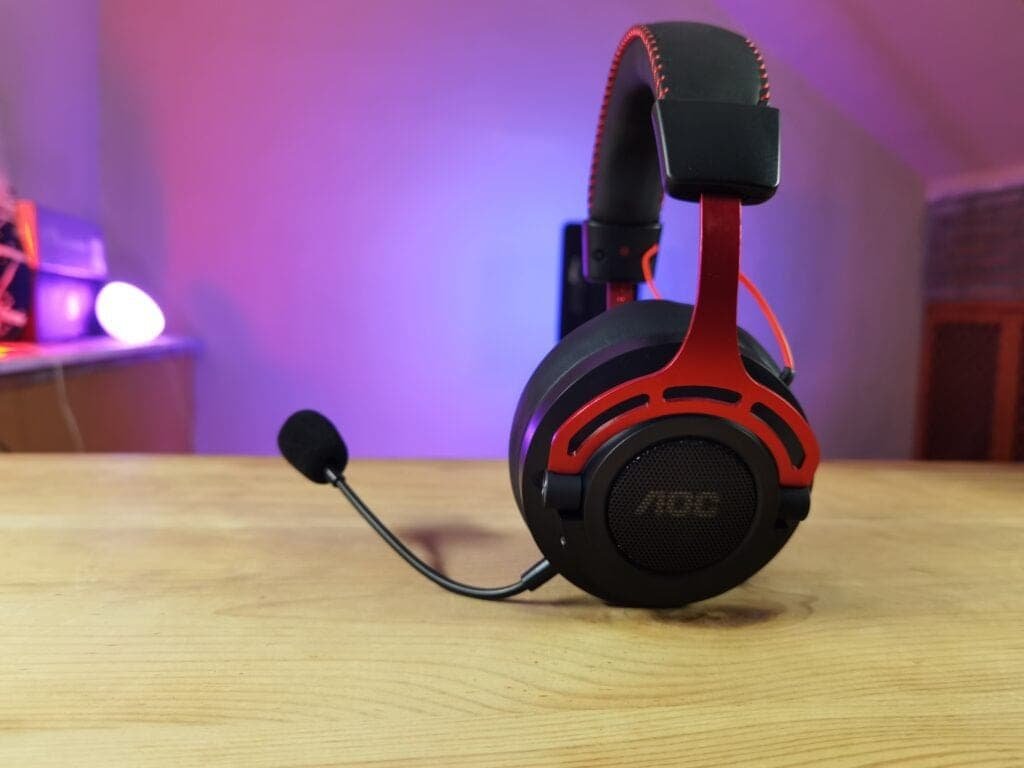
Discord teammates ranked it “broadcast-clear” against my desktop condenser, noting only that when I hammered a mechanical keyboard the taps slipped through. A noise gate in software squashed that easily. Sidetone is variable via the monitor wheel, and I found the thirty-percent mark perfect: enough of my own voice to avoid shouting but not so much that room echo returns.
Gaming Experience
In Souls bosses the gentle V-shape lifts sweeping orchestral crescendos without muddying hinge-point audio tells like rustling armor. That clarity translated to better parry timing or at least fewer embarrassing whiffs. Fast-twitch shooters benefited from the low wireless latency; flick-shotting felt identical to my wired benchmark. One night, servers went sideways and I jumped to a retro platformer. The chiptune soundtrack danced brightly; no frequency band overshadowed another, which is trickier to nail with simple stereo than surround virtualization.
The range freedom turned out to be a practical luxury. Between matches I could pace to the kitchen, grab water, keep voice chat alive, and return without removing the GH401 a small quality-of-life win that wired cans simply can’t match.
Music and Movies
Jazz trio recordings showcase midrange nuance, and the GH401 passes that test: an upright bass on Oscar Peterson’s We Get Requests thumps with woody texture, while piano hammers ping realistically. On pop tracks like Dua Lipa’s Levitating, kick drums stay punchy, the chorus lifts, and there’s no woolly mask over the vocals. Push volume past eighty percent and mid-bass bloom creeps in, but never devolves into one-note thud.
I streamed Blade Runner 2049 for the final verdict on cinematic chops. The headset conveyed the score’s subterranean drones without crackling, though the absolute deepest rumbles compressed a hair. Dialogue stayed legible even during the iconic “tears in rain” downpour a trick achieved by that polite mid scoop leaving room for voices. If you crave theater-level sub-bass you’ll want a dedicated headphone amp, but for a single-box wireless solution the GH401 punches higher than its spec sheet implies.
Final Verdict
After two weeks the AOC GH401 has settled into a groove I call predictable excellence. It never wowed me with gimmicks, yet it never once sabotaged a session. The build is humble but sturdy, the 2.4 GHz link feels surgically fast, and the 17-hour battery kept anxiety at bay even on marathon workdays. Comfort rivals headsets twice its price, and the sound signature walks the fine line between fun and faithful lively enough for boss fights, accurate enough to trust while editing vocals.
Flaws exist. The cups don’t swivel flat, which may annoy frequent travelers. The pads can warm up in summer rooms, and the low-volume amp hiss reminds you this is still an affordable peripheral. But none of those quirks overshadow the fundamentals: reliable wireless, balanced tuning, and hardware you forget you’re wearing until someone taps your shoulder.
If your checklist reads “solid build, drama-free wireless, honest audio, and no unnecessary software,” the GH401 checks every box and then adds one: it does so without draining your upgrade fund. Sometimes boring is brilliant, and here boring means you simply press play and get on with the game.
The AOC GH401 is available on Amazon.